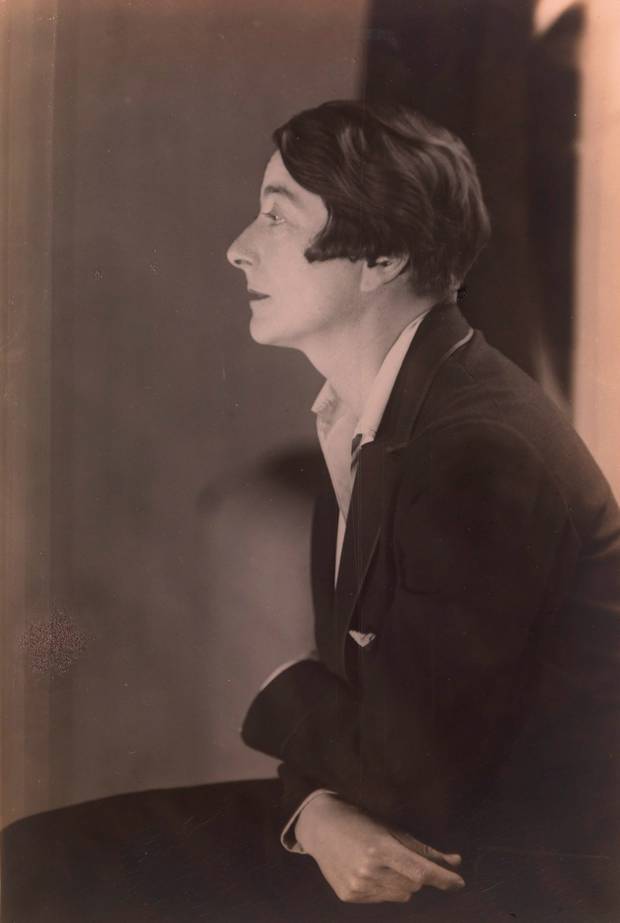

Queer Places:
University College London, Gower St, Kings Cross, London WC1E 6BT, Regno Unito
Slade School of Fine Art, University College London, Gower St, Bloomsbury, London WC1E 6BT, Regno Unito
Académie Julian, Passage des Panoramas, Paris, Francia
Académie Colarossi, 10 Rue de la Grande Chaumière, 75006 Paris, Francia
Jean Désert, 217 Rue du Faubourg Saint-Honoré, 75008 Paris, France
Villa E-1027, Sentier Massolin, 06190 Roquebrune-Cap-Martin, Francia
Père Lachaise Cemetery, 16 Rue du Repos, 75020 Paris, Francia
 Eileen
Gray (born Kathleen Eileen Moray Smith; 9 August 1878 – 31 October 1976) was
an Irish-born French-based architect and furniture designer and a pioneer of
the Modern Movement in architecture. Over her career, she was associated with
many notable European artists of her era, including Kathleen Scott, Adrienne
Gorska, Le Corbusier, and Jean Badovici, with whom she was romantically
involved. Gray spent the 1920s in France, first as an interior designer with a
glamorous shop in Paris, then as a practising architect whose modernist
‘E-1027’ villa in the Alpes Maritimes, built in 1926, is iconic. She
influenced Le Corbusier.
Eileen
Gray (born Kathleen Eileen Moray Smith; 9 August 1878 – 31 October 1976) was
an Irish-born French-based architect and furniture designer and a pioneer of
the Modern Movement in architecture. Over her career, she was associated with
many notable European artists of her era, including Kathleen Scott, Adrienne
Gorska, Le Corbusier, and Jean Badovici, with whom she was romantically
involved. Gray spent the 1920s in France, first as an interior designer with a
glamorous shop in Paris, then as a practising architect whose modernist
‘E-1027’ villa in the Alpes Maritimes, built in 1926, is iconic. She
influenced Le Corbusier.
Gray was born Kathleen Eileen Moray Smith on 9 August 1878, near Enniscorthy, in County Wexford, Ireland.[1] She was the youngest of five children[1] in a Protestant Anglo-Irish family.[2]
Her father, James MacLaren Smith, was a Scottish landscape painter.[1] He encouraged Gray's interest in painting and drawing.[2] Although he was a minor figure, James corresponded with major artists of the day.[3]
Her parents’ marriage broke up when she was eleven and her father left Ireland to live and paint in Europe.[1]
Gray's mother, Eveleen Pounden, was a granddaughter of Francis Stuart, 10th Earl of Moray.[3] She became the 19th Baroness Gray in 1895 after the death of her uncle.[3] Although the couple was already separated by this point, Gray's father changed his name to Smith-Gray by royal licence and the four children were from then on known as Gray.[4]
Gray split her upbringing between Brownswood House in Ireland and the family's home in Kensington, London.[3]
Both Gray's brother and father died in 1900.[3]
When architect Eileen Gray opened an interior design shop on the rue du Faubourg Saint-Honoré in 1922, she had already been initiated into the louche secrets of Parisian night-life, having visited bars there with a female friend, both dressed as men, while training at the Académie Julian in the early 1900s.
Renewed interest in Grey's work began in 1967 when historian Joseph Rykwert published an essay about her the Italian design magazine Domus.sup id="cite_ref-:7_9-4" class="reference">[9]
At a Paris auction of 1972, Yves Saint Laurent bought ‘Le Destin’ and revived interest in Gray's career.[1]
The first retrospective exhibition of her work, titled ‘Eileen Gray: Pioneer of Design’, was held in London in 1972.[1] A Dublin exhibition followed the next year.[1] At the Dublin exhibit, the 95 year old Gray was given an honorary fellowship by the Royal Institute of the Architects of Ireland.[1]
In 1973 Gray signed a contract to reproduce the Bibendum chair and many of her pieces for the first time.[14][11] They remain in production.[11]
Eileen Gray died on Halloween 1976.[1] She is buried in the Père Lachaise cemetery in Paris, but because her family omitted to pay the licence fee her grave is not identifiable.[1]
Gray was bisexual. She mixed in the lesbian circles of the time, being associated with Romaine Brooks, Loie Fuller, Marie-Louise Damien, and Natalie Barney.[15]
Gray's intermittent relationship with the singer Damia ended in 1938, after which they never saw each other again, although both lived into their nineties in the same city. Gray also had for some time an intermittent relationship with Jean Badovici, the Romanian architect and writer.[4]
He had written about her design work in 1924 and encouraged her interest in architecture. Their romantic involvement ended in 1932.[16]
Having never lived in Ireland during her adult life, in her old age she reportedly stated, "I am without roots, but if I have any, they are in Ireland".[17]
Gray was also connected with Elise Djo-Bourgeois.
My published books: